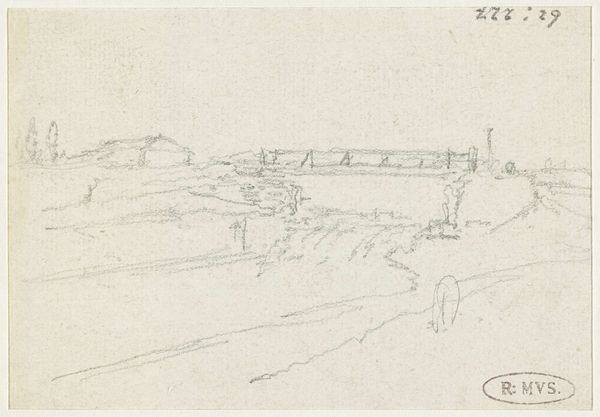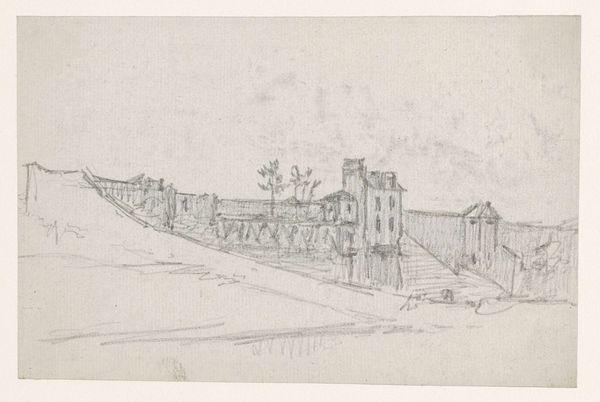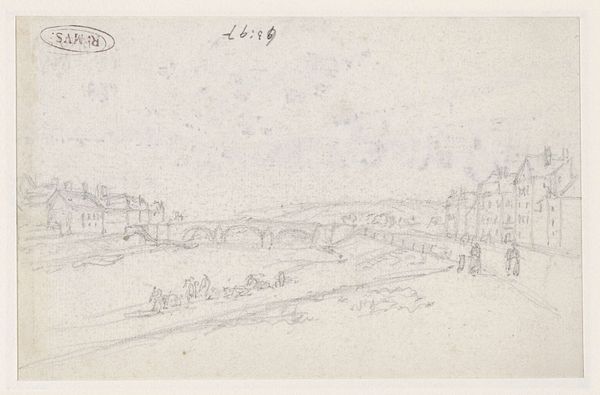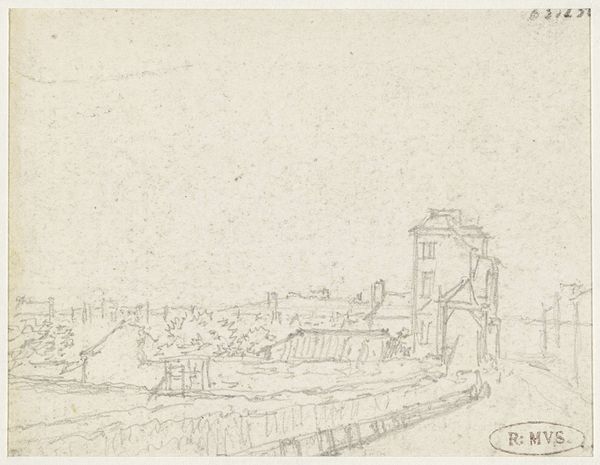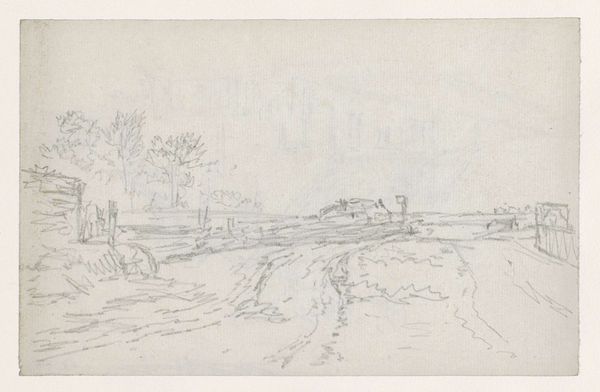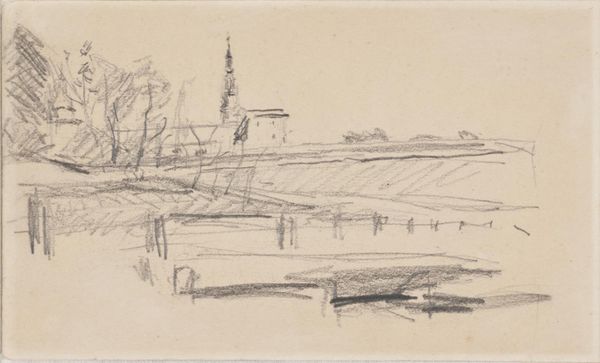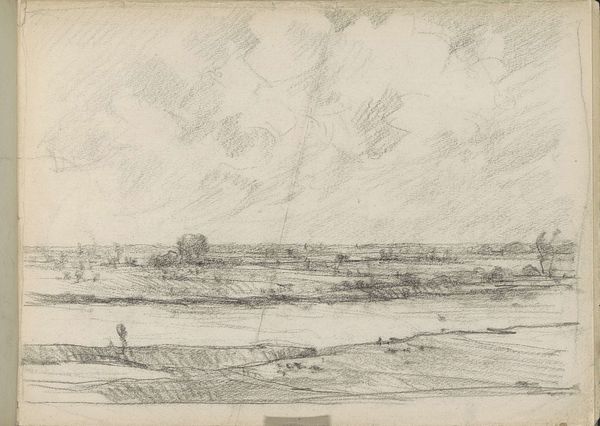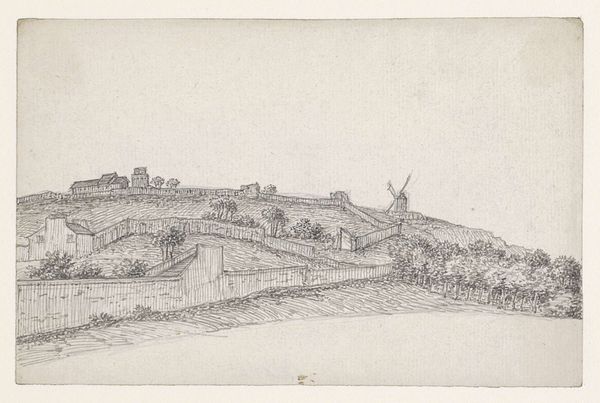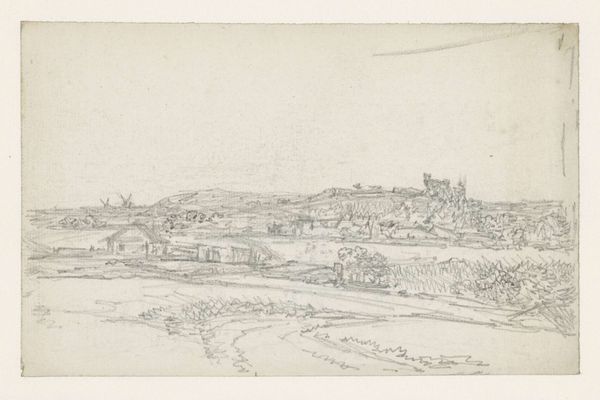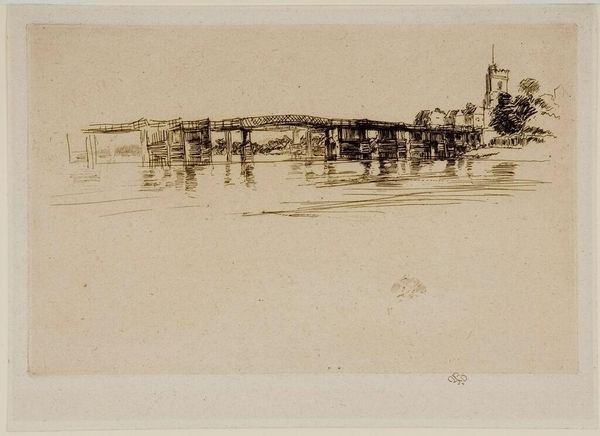
drawing, paper, pencil
#
drawing
#
pencil sketch
#
landscape
#
etching
#
paper
#
romanticism
#
pencil
#
cityscape
#
realism
Dimensions: height 80 mm, width 155 mm
Copyright: Rijks Museum: Open Domain
Curator: Georges Michel's "Seine-brug", dating from around 1773-1843, rendered delicately in pencil on paper, presents a fascinating study. It’s incredible to observe the bridge rendered as light strokes on paper, contrasted by areas of intricate, heavier etching. Editor: My immediate impression is one of distance, not just in terms of perspective, but a social distance. We're observing figures crossing this bridge, almost like ants, reduced in importance against the cityscape itself. It reminds me of the changing landscape of power and class in 19th century Paris. Curator: Interesting, since Michel devoted himself primarily to landscape painting, moving away from depictions of figures, so reducing their prominence could well speak to an exploration of rapidly evolving city spaces, the emerging tension between urban development and the individual. I'm drawn to the layers he builds using what appears to be simple graphite on paper. Editor: Precisely! This is not merely a picturesque cityscape but, perhaps, a visual representation of societal alienation. The material constraint of using primarily graphite, a common material, democratizes the experience of viewing, while the bridge itself symbolizes transition and the movement of goods, yes, but also the displacement and precarious lives of many in that era. Curator: The industrial overtones, too. He subtly indicates mass labor within a changing urban terrain. I wonder about the access he may have had to materials, how this relatively limited artistic equipment perhaps mirrors his subject matter in an economical fashion. Editor: Exactly. And perhaps the artist's choice to depict it this way also serves as a form of resistance. By using simple materials to render a scene of burgeoning industrial power, he might be commenting on the unequal distribution of resources, and making the statement that the story of modernization is far from equitable or visually ‘clean’. The haziness evoked through these sketched forms allows him a commentary on these topics through an emphasis of affect, a subjective reaction to the landscape itself. Curator: Well, whether conscious resistance or merely economical use of readily available supplies, there is an appealing raw quality within “Seine-brug” in its material expression, wouldn’t you agree? Editor: Undeniably! I appreciate the drawing even more now, seeing the quiet complexities of labor and its place.
Comments
No comments
Be the first to comment and join the conversation on the ultimate creative platform.
